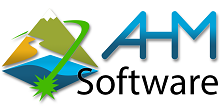Getting Started with HydroVish
The Vish Visualization Shell is a framework to allow exploration of datasets
for scientific visualization.
It is built from reusable components, "Vish Objects".
The framework is based on two design concepts that are essential for interaction with
its user interface:
- The Visualization Pipeline is conceptual model for scientific visualization system,
describing the (step-wise) process of creating visual representations from data.
Vish utilizes the Pull Model of a visualization pipeline,
in which data are only processed when they are required by a sink.
For a user unfamiliar with this model the behavior may be
confusing initially because nothing happens until the entire visualization
pipeline has been set up and means to consume data (e.g. render methods)
have been specified.
Learn more...
- Visual Programming:
In order to set up the visualization pipelines, objects need to
be selected and connected. This can be done programmatically or
entirely equivalently from the graphical user interface (GUI).
Learn more...
Practical usage scenarios include:
- Data Importing & Processing:
HydroVish's primary data format for files is "F5",
a semantic layout on top of HDF5.
Other file formats are supported as well, but are less efficient.
Files are therefore recommended to be imported and processed
in the F5 format.
Learn more...
- Data Editing:
Manual classification is the process to assign specific identifiers - classification numbers, or "labels" -
to each point of a dataset.
Learn more...
- Workflow Management:
If data need to undergo many steps of data processing, the
integrated workflow management provides automatization of an
extended data processing chain for big data.
Learn more...
For an overview of all VISH help topics see the Table of Contents.
